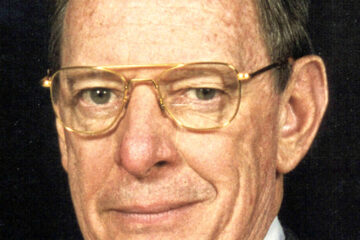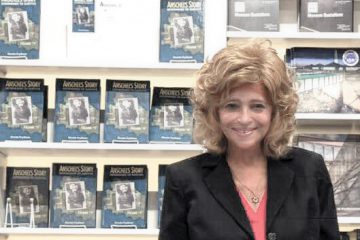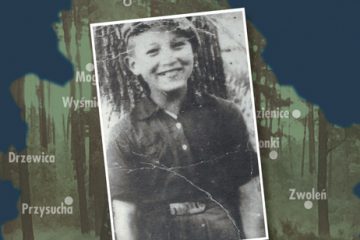Veterans safeguard legacies of freedom, warnings against prejudice
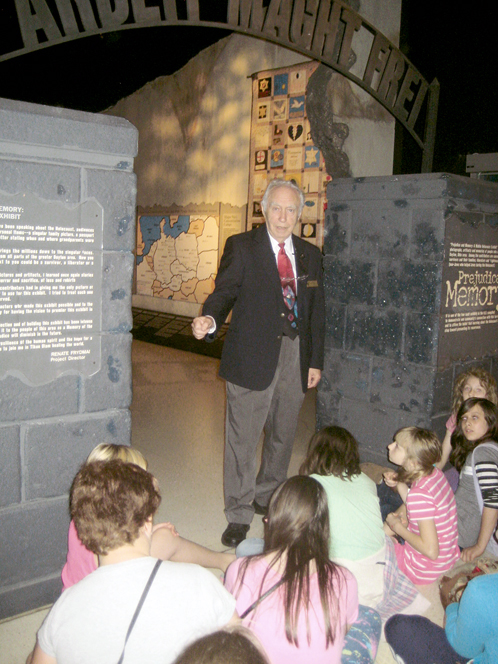
By Marshall Weiss, The Observer
If ever there were a need for Holocaust education, this is the time. With the new school year, about two dozen middle and high school groups from as far away as Indiana and Kentucky will likely visit Prejudice and Memory: A Holocaust Exhibit, on display at the National Museum of the U.S. Air Force in Fairborn.
The museum averages between 800,000 and 1 million visitors each year, who also see the Holocaust display when they walk from the World War I to the World War II hangar.
This year marks the 20th anniversary of Prejudice and Memory, and the 18th year it has been on permanent display at the Air Force museum. It’s also the 150th anniversary of the establishment of the Dayton Veterans Affairs Medical Center.
Veterans and their descendants in the local Jewish community have taken up the charge to keep the history lessons of freedom — and warnings about prejudice — alive for those who are willing to listen.
Renate Frydman, chair of the Dayton Holocaust Committee, initially curated Prejudice and Memory as a mobile exhibit. It was one of the first Holocaust exhibits in the United States to focus on local survivors, liberators, and Righteous Gentiles.
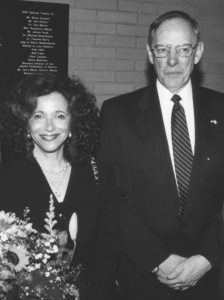
Frydman, who collected all the artifacts for Prejudice and Memory — including a uniform from the Buchenwald concentration camp — has trained about a dozen docents to lead tours of the exhibit.
“It has an impact because our goal was to make it — ‘These people are your neighbors,’” Frydman said. “In the early years, people saw their pictures and recognized them. And that is a very powerful thing to know, that you knew them. And it still is.”
Just as powerful is when someone featured in the exhibit or another local person with a connection to the Holocaust is able to meet the students. With each passing year, fewer and fewer remain.
But among the most active exhibit docents are members of Dayton’s Jewish War Veterans Post 587: Joe Bettman, Henry Guggenheimer, and Ira Segalewitz. Guggenheimer and Segalewitz survived Nazi Europe, and Bettman is a past president of the Jewish Federation of Greater Dayton.
“Whenever they need me I come over and lead the tours around,” said Guggenheimer. “I give them a talk, we lead them around through the exhibit and we give them our own story, what happened to us, and they ask questions. They always thank me for giving the talk. They appreciate it.”
He noted that parents join the middle and high schoolers on the trips now and then.
“Sometimes it’s the first time they (the parents) have heard about it, and they’re very interested in it.”
Judith Wehn, chief of the museum’s education division, was there when the exhibit arrived.
“We were happy to host it because of the incredible interest we had in it, and it stayed,” she said. “It’s not just the students who have had the opportunity to see it, but also any visitor that comes through. And we regularly find people seated there watching the videos that are available.”
The videos are drawn from the Faces Of The Holocaust series of interviews with local survivors, liberators and Righteous Gentiles produced by Frydman through Wright State University.
“Many of the students that come to us for these programs are about the same age as they were (those featured in the exhibit) when this horrific situation existed,” Wehn said. “And so, all of a sudden, the students start to put themselves in that place a little bit, and realize what that truly meant.”

The Holocaust exhibit has also become the focus of Wright-Patterson Air Force Base’s Holocaust Remembrance Day, which began three years ago.
“We have offered that program with speakers, and then people have a chance to visit the exhibit themselves,” Wehn said. “In many cases, this is something that was missed in their own high school curriculum.”
Wehn added that approximately 15,000 viewers streamed this year’s Wright-Patt Holocaust program through the museum’s Facebook page.
“The outreach continues with that program and how important it is to be integrated into our Air Force story,” Wehn said. “Also, it’s part of the Air Force story because of the terror flyers towards the end of the war, the Allied air forces that were shot down were taken to the concentration camps, not the POW camps. There were 186 captured Allied airmen of whom 82 were Americans, and they went to Buchenwald.”
Frydman recalled that museum director Metcalf would explain to anyone who questioned why the museum accepted the Holocaust exhibit: “This is what we were fighting the war for — to free Europe.”
Over her years shepherding the exhibit, Frydman has seen an overall increase in Holocaust education in area schools.
“We have a lot of teachers in the region who believe that the study of the Holocaust helps combat prejudice and bullying,” she said. “That’s why they decide to teach it: even if we can get one child in each group to be less prejudiced, less bullying, less mean to others, more respectful.”
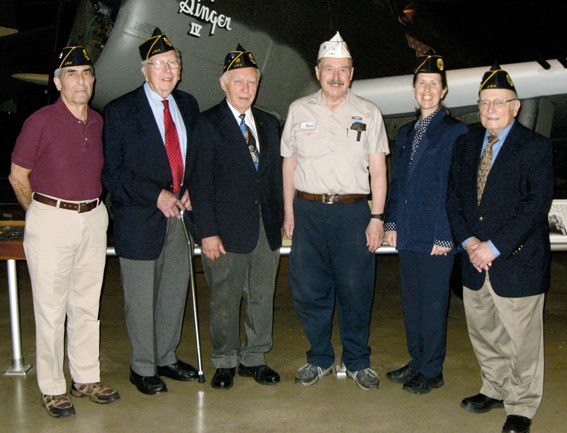
“All of us who volunteer at the museum look at it as an honor,” said Steve Markman, past commander of JWV Post 587, and current JWV commander for the state of Ohio.
The retired aerospace engineer has volunteered to restore planes at the museum since 2006. His major project has been helping to restore the Memphis Belle, one of the first U.S. Army Air Forces heavy bombers to return to America after completing 25 missions over Europe in World War II. Markman has helped recreate the wooden fittings such as its doors from original factory drawings. It’s set to go on public display in May.
JWV members who also give tours in various galleries at the museum are Leslie Buerki and Bert Cream.
Dayton VA 150th
At the Dayton Veterans Affairs Medical Center, Bonnie Beaman Rice and Judge Walter H. Rice are spearheading its 150th anniversary celebration: Walter is president of the American Veterans Heritage Center, the non-profit that is organizing the 150th fund-raiser; Bonnie is on the executive committee, and co-chairs the event with Cindy LaPointe-Dafler.
“It’s an 1867 garden party and the entertainment is going to be an old-time traveling show,” Bonnie Beaman Rice said of the event, to be held Sept. 9 at 4 p.m. at the VA’s Grotto and Gardens. “The VA was really a big tourist destination around the turn of the century. It attracted thousands of people out to the grounds, with a theatre, a petting zoo, a lake with crocodiles in it.”
The American Veterans Heritage Center, she added, has helped the VA’s master gardeners restore the grotto, gardens and chapel, and was instrumental in having the Dayton VA designated as the site for the VA’s national archives.
“Part of the AVHC mission is to honor veterans’ service, to heal them, and this is such a beautiful campus that we have with the gardens now and the chapel,” Rice said. “It’s really a healing, spiritual place for people, especially soldiers who are dealing with difficult memories, and to provide a home for them. There are veterans living on campus still.”
To read the complete September 2017 Dayton Jewish Observer, click here.


